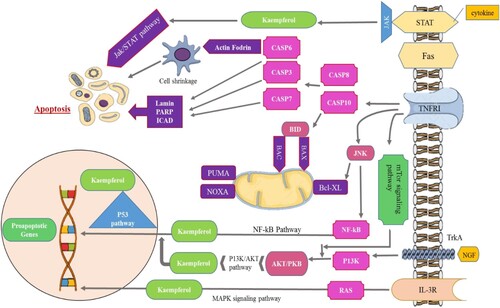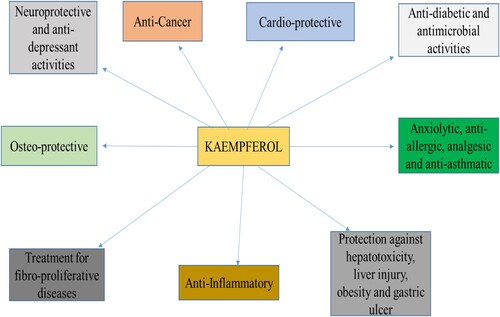Figures & data
Figure 3. Anticancer mechanisms associated with kaempferol. Figure shows kaempferol induces apoptosis in tumour cells through a variety of signalling pathways and mitochondrial mechanisms. Kaempferol inhibits the PI3K/AKT/mTOR pathway, inhibition leads to the activation of pro-apoptotic proteins, p53 and caspases (CASP). Kaempferol suppresses ERK pathway, leads to the activation of MAPK. The inhibition of NF-κB pathway activates pro-apoptotic protein CASP8. Mitochondrial targeting causes cytochrome-c release, which activates caspases.

Table 1. Anticancer potential of kaempferol in the light of published studies.


